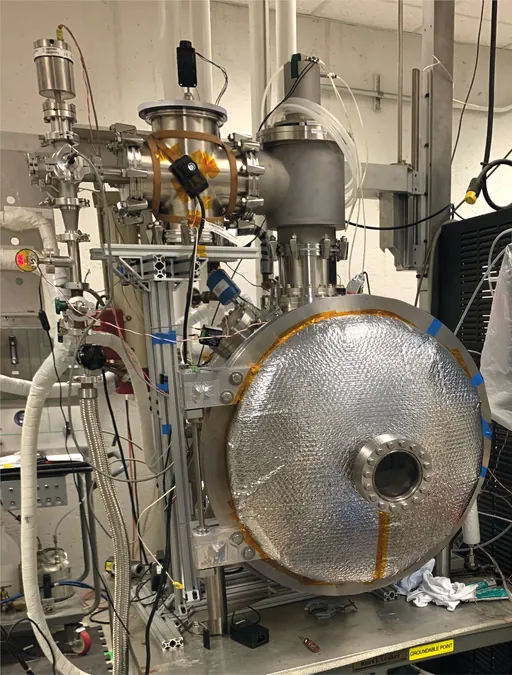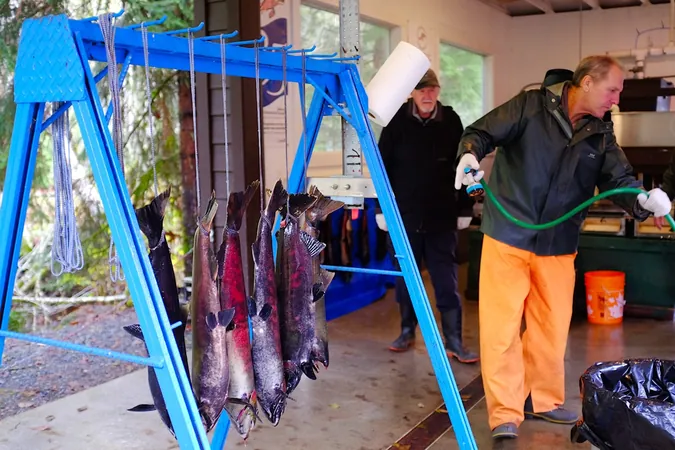
Unveiling the Secrets of Vesta: New Discoveries from NASA's Dawn Mission
2024-12-21
Author: Jacques
Introduction
The vast expanse of our solar system is riddled with celestial bodies marked by craters and scars from billions of years of impact from meteoroids and cosmic debris. Among these bodies is Vesta, a giant asteroid that has piqued the interest of scientists since NASA's Dawn mission first explored its surface. While its cratered terrain is a clear reminder of its tumultuous past, Vesta also showcases intriguing deep channels, or gullies, whose origins have long puzzled researchers.
New Insights into Vesta's Gullies
A leading theory has been that these gullies emerged due to dry debris flows triggered by meteoroid impacts and fluctuating temperatures induced by sunlight. However, fresh insights from a groundbreaking NASA study suggest that these features may have also resulted from transient flows of liquid water, a possibility once considered elusive. This study, recently published in The Planetary Science Journal, meticulously examined the potential mechanisms that could lead to the sudden appearance and fleeting existence of water flows on Vesta.
Laboratory Simulations and Findings
Using advanced laboratory techniques, scientists replicated Vesta's conditions to explore the characteristics of these potential liquid flows. Although frozen brine deposits on Vesta yet remain unconfirmed, studies have proposed intriguing scenarios in which meteoroid strikes might uncover subsurface ice, melting it and triggering brief water flows that could sculpt the surface into the familiar features we observe.
Challenges of Liquid Sustainment
One of the significant challenges in understanding these processes is how an airless body like Vesta could sustain liquid for enough time to forge these channels. Under normal circumstances, liquids would rapidly vaporize in the intense vacuum of space. 'Not only do impacts trigger a flow of liquid on the surface, the liquids are active long enough to create specific surface features,' explained Jennifer Scully, the project leader and a planetary scientist at NASA's Jet Propulsion Laboratory.
The Role of Sodium Chloride
The results highlighted a crucial element: sodium chloride, or table salt. While pure water froze almost instantaneously in the simulated Vesta conditions, briny solutions managed to remain in liquid form for at least an hour. This extended fluidity is significant because it aligns with the estimated timeframe needed to create the observed gully features on Vesta, which require as little as half an hour to form.
The Dawn Mission's Journey
The Dawn mission, which launched in 2007, ventured into the asteroid belt between Mars and Jupiter, successfully orbiting Vesta for 14 months and then Ceres for nearly four years. Before concluding its mission in 2018, Dawn revealed that Ceres may still harbor a subsurface reservoir of brine, highlighting the potential for ongoing geological activity.
Laboratory Techniques and Phenomena
To mimic Vesta-like conditions in the lab, scientists worked within a sophisticated test facility, the Dirty Under-vacuum Simulation Testbed for Icy Environments (DUSTIE), at JPL. By rapidly depressurizing the air around the liquid samples, they recreated the conditions that would follow a meteoroid strike. The experiments demonstrated that while pure water froze immediately, salty brines maintained their flow for an extended period, paving the way for the formation of surface features before succumbing to freezing.
Observations of Frozen Material
The researchers also observed the formation of a 'lid' of frozen material atop the brine, a phenomenon that could help insulate the liquid from the surrounding vacuum, allowing it to flow longer before solidifying. This is akin to how lava flows beneath the surface of Earth can travel farther inside lava tubes compared to open air.
Broader Implications for Planetary Science
As our understanding of extraterrestrial processes deepens, the implications stretch beyond Vesta. The principles illustrated by these experiments may also reflect the dynamics of mud volcanoes on Mars and icy eruptions on Jupiter's moon, Europa. 'Our results contribute to a growing body of work that employs lab experiments to shed light on the longevity and behavior of liquids across various celestial environments,' emphasized Scully.
Conclusion
The findings not only enhance our comprehension of Vesta's mysterious surface features but also expand the horizons of planetary science, offering a glimpse into the geologically active past of other worlds in our solar system. As space exploration continues, these insights remind us that beneath the surface of many celestial bodies lies a story waiting to be unveiled.









 Brasil (PT)
Brasil (PT)
 Canada (EN)
Canada (EN)
 Chile (ES)
Chile (ES)
 España (ES)
España (ES)
 France (FR)
France (FR)
 Hong Kong (EN)
Hong Kong (EN)
 Italia (IT)
Italia (IT)
 日本 (JA)
日本 (JA)
 Magyarország (HU)
Magyarország (HU)
 Norge (NO)
Norge (NO)
 Polska (PL)
Polska (PL)
 Schweiz (DE)
Schweiz (DE)
 Singapore (EN)
Singapore (EN)
 Sverige (SV)
Sverige (SV)
 Suomi (FI)
Suomi (FI)
 Türkiye (TR)
Türkiye (TR)